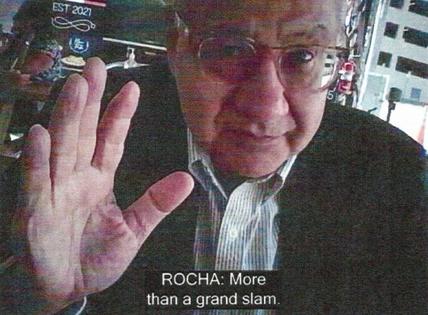A US ambassador working for Cuba? Charges against former diplomat Victor Manuel Rocha spotlight Havana’s importance in the world of spying
Published in News & Features
The U.S. Department of Justice announced on Dec. 4, 2023, that Victor Manuel Rocha, a former U.S. government employee, had been arrested and faced federal charges for secretly acting for decades as an agent of the Cuban government. Rocha joined the State Department in 1981 and served for over 20 years, rising to the level of ambassador. After leaving the State Department, he served from 2006-2012 as an adviser to the U.S. Southern Command, a joint U.S. military command that handles operations in Latin America and the Caribbean.
Harvard Kennedy School intelligence and national security scholar Calder Walton, author of “Spies: The Epic Intelligence War Between East and West,” provides perspective on what U.S. Attorney General Merrick Garland described as “one of the highest-reaching and longest-lasting infiltrations of the United States government by a foreign agent.”
Every state seeks to place spies in this way. That’s the business of human intelligence: providing insights into a foreign government’s secret intentions and capabilities.
What makes Rocha’s case unusual is the length of his alleged espionage on behalf of Cuba: four decades. It’s important to emphasize the word alleged here – the case is underway, and Rocha has not yet offered a defense, let alone been convicted.
If proved, however, Rocha’s espionage would place him among the longest-serving spies in modern times. Allowing him to operate as a spy in the senior echelons of the U.S. government for so long would represent a staggering U.S. security failure.
Typically, an embedded spy would be tasked by his or her recruiting intelligence service to take actions like stealing briefing papers, secret memorandums and other materials that show what decision-makers are thinking. Such work quickly resembles movie scenes – photographing secret documents, swapping information in public places or depositing it under lampposts and bridges.
Having an agent reach ambassador level would be a prize for any foreign intelligence service. Rocha held senior diplomatic postings in South America, including Bolivia, Argentina, Honduras, Mexico and the Dominican Republic. This would have given him, and thus his Cuban handlers, access to valuable intelligence about U.S. policy toward South America — and anything else that crossed his desk.
An embedded spy can also act as an “agent of influence” who works secretly to shape policies of the target government from within. This will be something to look for as the federal government discloses more information to support its charges against Rocha.
Presumably the U.S. intelligence community either already has carried out a damange assessment, or is urgently now conducting one, reviewing what secrets Rocha had access to during his diplomatic service – and whether, as ambassador to Bolivia, he may have shaped U.S. policy at the behest of Cuban intelligence.
Cuban intelligence worked closely with the Soviets during the Cold War. After Fidel Castro took power in Cuba in 1959, Soviet intelligence maintained close personal liaisons with him. Cuba’s intelligence service, the DGI, later known as the DI, received early training and support from the KGB, Russia’s former secret police and intelligence agency.
...continued








Comments